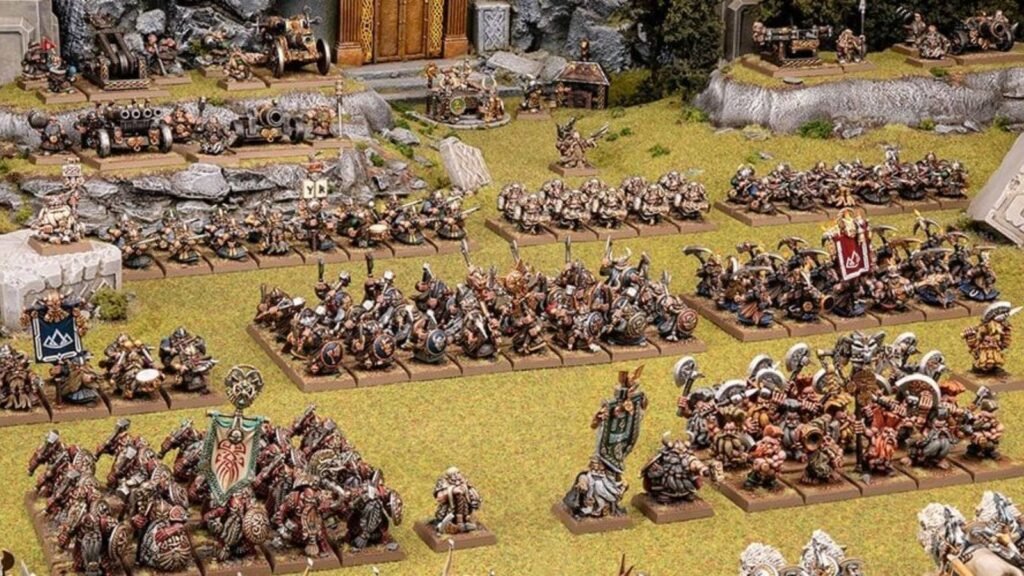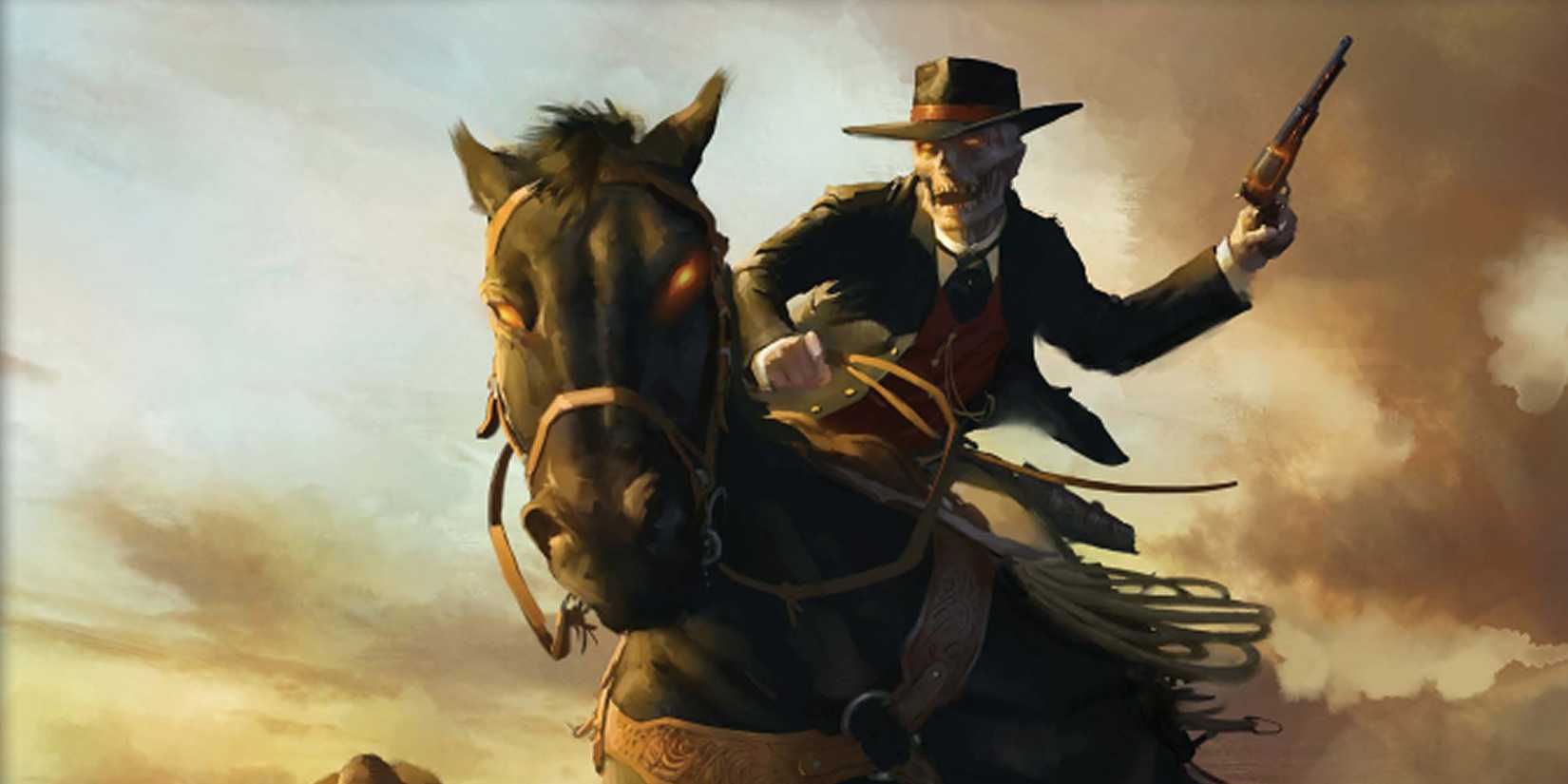
There’s a common theme in horror; no matter how painful it may be to say goodbye, you have to let the dead rest. From Frankenstein’s cobbled-together creature who never asked for life to the well-intentioned resurrections gone awry of Pet Sematary, the moral ultimately boils down to, as it’s famously said in the latter, “sometimes, dead is better.” If only game publishers would learn this lesson.
Back From The Grave
There’s money to be made from nostalgia, and lately that’s resulted in bringing back classic franchises that had long been considered dead and buried. It’s especially prevalent in the tabletop space, with Vampire: The Masquerade and the rest of the World of Darkness lineup having returned to shelves, the relaunch of Warhammer Fantasy as Warhammer: The Old World, and, to a lesser extent, SteamForged Games’ acquisition and aggressive relaunch of Warmachine.
I was a longtime fan of all three games, with each taking its turn as my favorite at different stages in my life. World of Darkness and Warhammer were both phased out to make way for new properties, while Warmachine’s transition from its second to third edition alienated players to the point where there simply wasn’t a community for it any longer. In all three cases, I — and, surely, countless other fans across the globe — mourned the loss and moved on.
Obviously, it’s not as big a blow as losing a person, or even a pet, but a favorite game is still a fundamental part of a gamer’s identity and daily routine, so how we deal with the loss when it ends can be a major step in our personal journey. To grapple with that, and ultimately accept it, only for the game to return decades later, isn’t the joyous occasion publishers think it is; it’s asking us to set aside the growth that comes from loss, all in the hopes that we’ll spend some money for the sake of nostalgia.
Nothing Lasts Forever
In part, the whole phenomenon is a bed of our own making. Gamers, as a rule, don’t like change. Vampire: The Masquerade, Werewolf: The Apocalypse, and the rest of the Old World of Darkness were discontinued in 2004, after a yearlong apocalyptic conclusion to their various storylines. New World of Darkness (now called Chronicles of Darkness) released the following year but struggled to get the same traction as its predecessor, despite having a more streamlined system, more compelling settings, and some of the best horror ever in a TTRPG.
Seriously, play a game as regular mortals sometime. Halloween is coming, so it’s the perfect time of year!
Ultimately, OWOD returned in 2018 with the relaunch of Vampire: The Masquerade, and despite nearly being dead on arrival after allegations that it was being marketed specifically to Neo-Nazis, it’s now in the reliable hands of Renegade Game Studios. Werewolf, Hunter, and the rest are making their way back into the TTRPG ecosystem.
Following a similar yearlong in-universe apocalypse, Warhammer Fantasy was replaced by Age of Sigmar in 2015, which, admittedly, had a very rough first edition initially designed for beer-and-pretzel play that alienated serious players. Since then, though, it has evolved into a solid fantasy wargame that stands tall alongside its cousin 40K. It’s integrated classic factions and given rise to new ones, and the Mortal Realms setting offers fertile ground for creativity in building terrain, tables, and custom bases.
Fans, however, missed Warhammer Fantasy, and in 2024 Games Workshop re-released it as Warhammer: The Old World. It’s now sold alongside Age of Sigmar, begging the question of why it was ever pulled in the first place.
It’s important to point out that the two games are not compatible; even where models cross over, Age of Sigmar uses round bases and skirmish formations, while Old World uses square bases and regimental formations.
Learning to love both of these new game systems for what they were, instead of how they stacked up against the old games, was a huge part of growing both as a gamer and as a person for me. By the time I set my Warmachine models on the shelf for good, I was ready to turn the page and see what was next.
Now, even though all the greatest hits of my gaming life have been brought back by the necromancy of capitalism, I’m not interested in playing any of them. I built my memories, paid my respects, and laid dice at their graves. I’m much more concerned with what the next game to make the list will be.
Fallow Fields For A Ripe Harvest
While I don’t begrudge anyone who’s glad to have their Lost Lenore of the tabletop back and encourage anyone who missed the games the first time around to have a go at them, rehashing old territory is bad for the industry as a whole. Particularly in the case of World of Darkness and Warhammer, the controversial decision to axe a beloved property ultimately allowed something new to grow in its place. That change doesn’t come without pain, but it’s worth it to move the state of the art (and games are art) forward.
Take Deadlands, for example. When it first launched in 1996, it was one of the most innovative RPGs fans could hope for. Its horror-western setting was exciting, unique, and ready to be explored, and its poker-hand mechanic played well alongside the traditional dice – not to mention fitting perfectly with the mood of the game. Like the undead Harrowed of the Weird West, though, it’s been dragged back to life several times; first as a setting sourcebook for another game, Savage Worlds, then as a 20th Anniversary Special Edition. With the 30th anniversary approaching next year, stores are gearing up to… get a reprint of the 20th Anniversary Edition. That’s not a healthy game, it’s a nostalgia-driven FOMO purchase. As important and fun as Deadlands is, if it can’t continue to break ground and innovate, it needs to clear the way for a new game that can.
Games that succeed in the long term are the ones that consistently manage to grow and innovate. There’s a reason that Magic introduces new mechanics and interactions with each set, and that Warhammer 40K is on its tenth edition and going strong. Take the case of Warhammer Fantasy. When it was discontinued in 2018, it was in its 8th Edition, and fans eagerly awaited what they expected would be the 9th after the End Times storyline concluded. The discontinuation of the game and surprise release of Age of Sigmar was seen as a betrayal, because Warhammer Fantasy had more to offer. Now that it’s been rebranded as Warhammer: The Old World, we can expect that it’s going to stay largely the same, forever, or until it’s discontinued again, because its purpose isn’t even partially to move fantasy wargaming forward; it’s to capture a specific moment in time for a subset of the market.
Letting games stay dead opens up space, both creatively and on store shelves, for new ideas and new properties. These can draw from the hits of yesteryear, or experiment with fresh new systems – or both! Staying stuck in the past, though, is how we’ll end up playing with the same rules for D&D twenty years from now, with only similar systems like Pathfinder and Daggerheart to offer “alternatives.”
Keeping older games in print for archival or retro play purposes, of course, is just fine, and sites like Drive-Thru RPG have done a tremendous job in that regard. The trouble arises when legacy games crowd out new voices simply because known properties are marketable.
Tabletop gaming is a creative hobby, whether you’re building a character for roleplaying, painting an army of miniatures, or devising a devastating TCG combo. As consumers and creators alike, we need to embrace that creativity, and build a future that’s inspired by the past rather than trapped in it.



